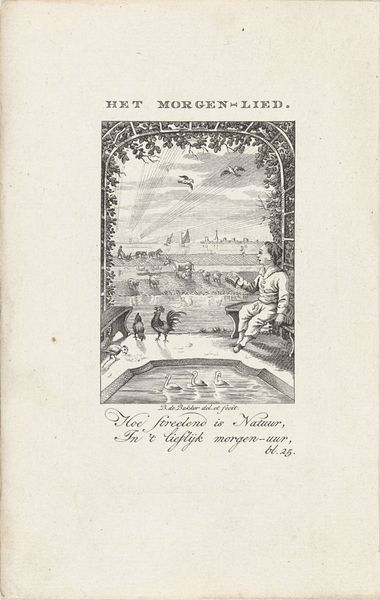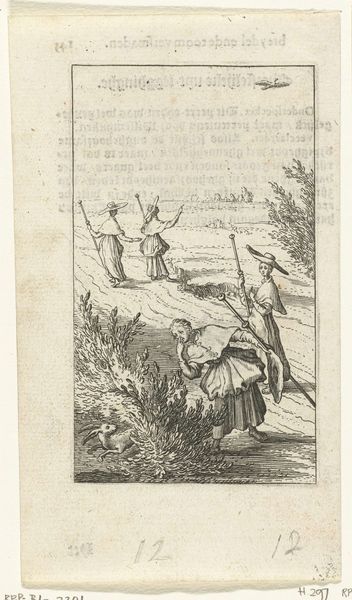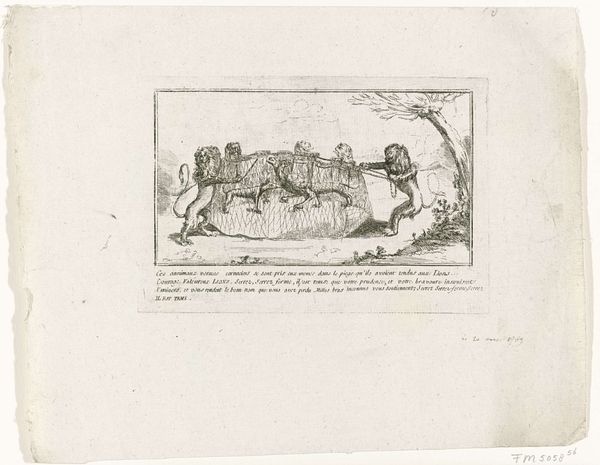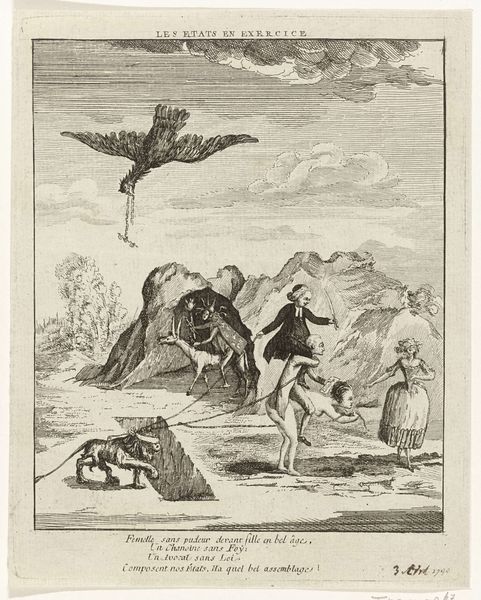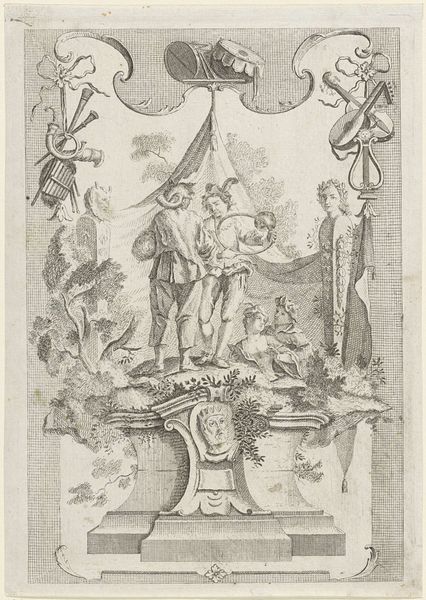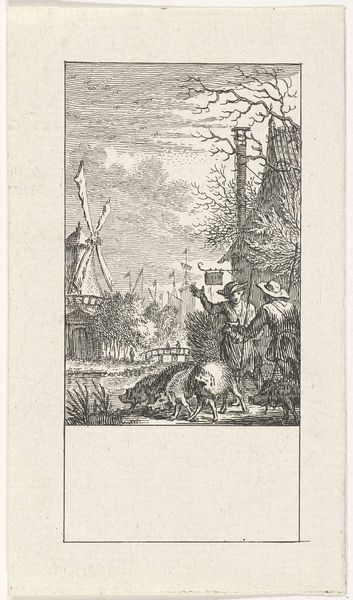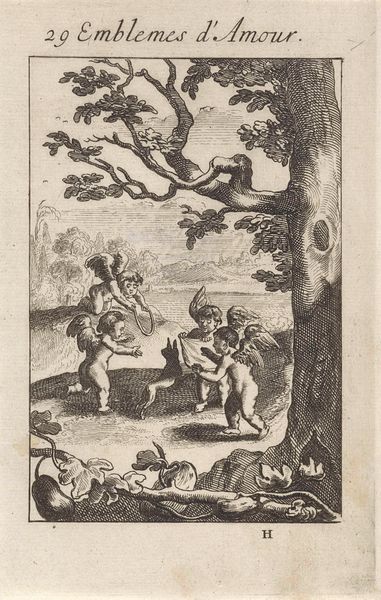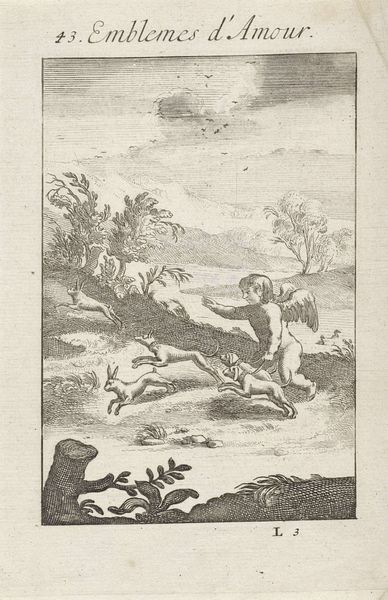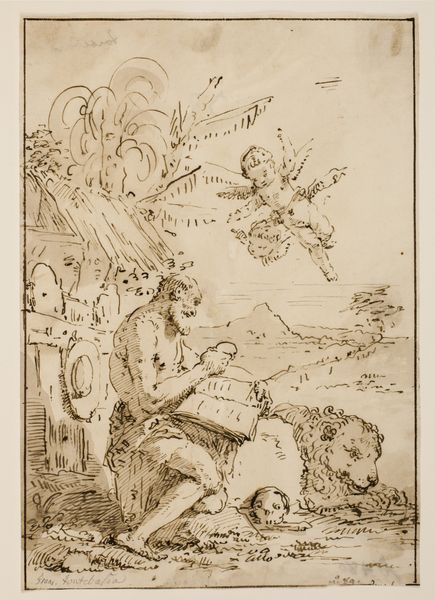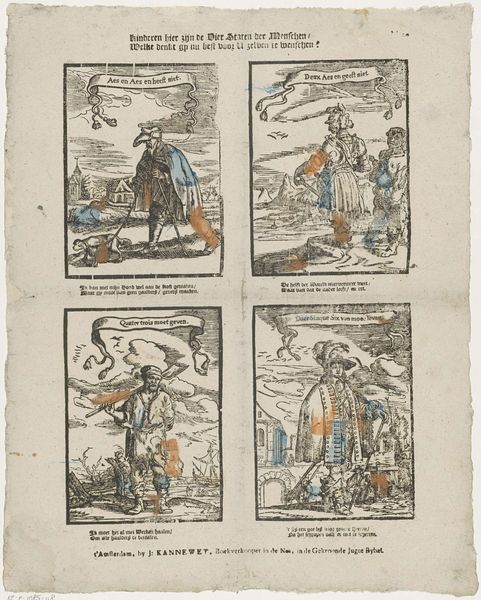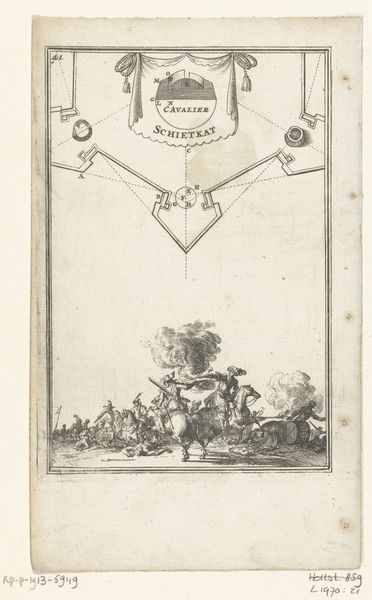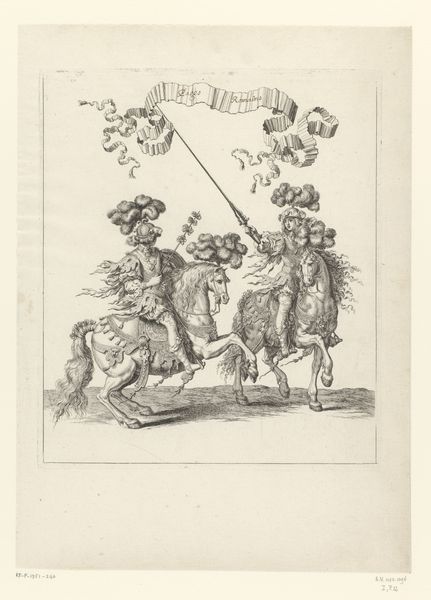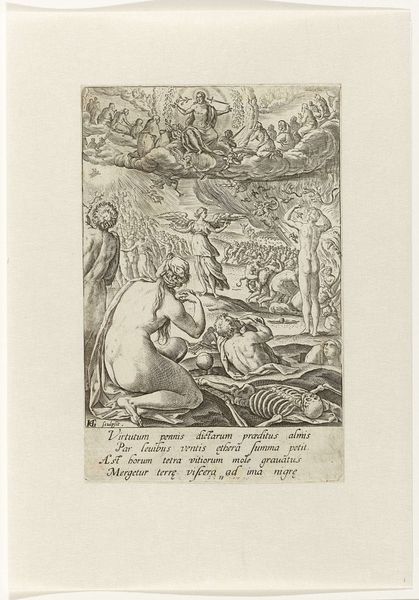
print, engraving
#
allegory
# print
#
caricature
#
landscape
#
figuration
#
history-painting
#
engraving
Dimensions: height 154 mm, width 117 mm
Copyright: Rijks Museum: Open Domain
Curator: Let's turn our attention to this fascinating print, an engraving created anonymously between 1787 and 1790 entitled "Spotprent op keizer Jozef II" here at the Rijksmuseum. Editor: It has an unsettling but also strangely humorous mood. The overall composition with its landscape is quite whimsical; the scale feels intimate. Curator: Absolutely. This piece needs to be viewed within the tumultuous reign of Emperor Joseph II. He attempted sweeping reforms based on Enlightenment ideals, but many in the Austrian Netherlands—now Belgium—resented these changes, perceiving them as attacks on their traditions and local governance. Editor: It is a print, so likely mass produced; therefore intended for wide circulation and consumption as a visual artifact criticizing power structures, yes? Given its status as an engraving, there's a clear intention here toward replicability, an affordable critique distributed broadly. Curator: Exactly. This caricature reflects that resistance. Note the moons with faces flanking Joseph, trapping him in an absurd dance, betrayed, according to the text, by fortune. The circle of winged moon faces above adds to the feeling of inescapable, mocking scrutiny. The winged eagle also has its role. Editor: How potent to take symbols of heavenly bodies, typically aligned with consistency, and fashion them into tools of ridicule. We also see buildings included here; I would wonder to what degree they function as indices of labour, class relations, as a direct commentary on consumption and materiality, or not. The text also references this fortune idea and that he won’t only see moons. I imagine those who purchased this shared very knowing laughter. Curator: These visual elements converge to portray Joseph II as a figure out of touch and isolated amidst the very reforms he championed, a ruler undone by his own ambitions and perceived tyranny against local custom. It reflects the collective anxieties surrounding rapidly shifting social landscapes, especially top-down enforced changes. Editor: Thank you, that offers great context. As we step away, it's fascinating to consider not only its sharp political critique, but also how it reminds us that anxieties concerning social change can be traced far back into the material culture of European societies. Curator: Indeed, it is a striking snapshot of a society grappling with immense transformations of all types.
Comments
No comments
Be the first to comment and join the conversation on the ultimate creative platform.
